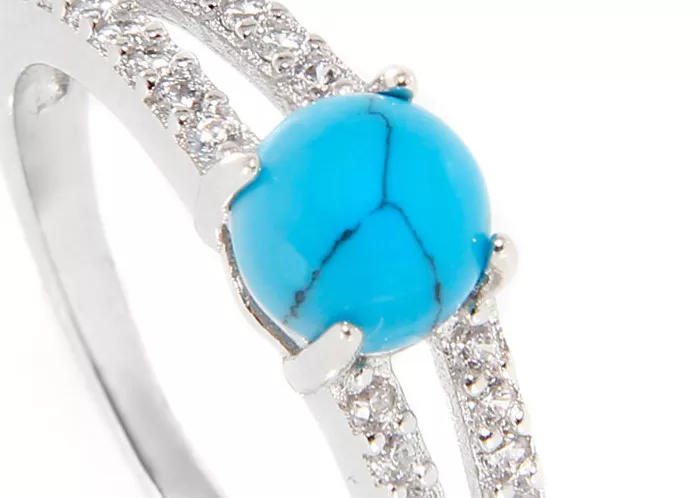Turquoise is a stunning gemstone known for its vibrant blue and green hues. It has been treasured for centuries in various cultures, from ancient Egypt to Native American traditions. However, turquoise is a relatively soft and porous stone, which means it requires special care to maintain its beauty.
In this guide, we will cover everything you need to know about caring for turquoise jewelry. You will learn how to clean, store, and protect your turquoise pieces so they last for generations.
Understanding Turquoise: Why It Needs Special Care
Turquoise is a hydrous phosphate mineral made of copper and aluminum. Its unique properties make it both beautiful and delicate:
Softness: Turquoise ranks 5 to 6 on the Mohs hardness scale, meaning it can scratch easily.
Porosity: It absorbs oils, lotions, and chemicals, which can change its color.
Sensitivity: Heat, sunlight, and harsh chemicals can damage turquoise.
Because of these traits, turquoise jewelry needs gentle handling and proper maintenance.
Daily Wear: How to Protect Your Turquoise Jewelry
Turquoise jewelry looks stunning, but it’s not ideal for everyday wear in harsh conditions. Here’s how to protect it:
Avoid Contact with Chemicals
Perfumes, lotions, and hairsprays can seep into the stone and cause discoloration.
Household cleaners (bleach, ammonia, etc.) can erode the stone.
Chlorine (in pools and hot tubs) can damage turquoise.
Tip: Always put on your turquoise jewelry after applying makeup, perfume, or lotion.
Keep It Away from Water
Water exposure (especially hot water) can weaken the stone and cause cracks.
Remove turquoise rings before washing hands, showering, or swimming.
Protect from Physical Damage
Avoid hard impacts—turquoise can chip or crack if dropped.
Store separately to prevent scratches from other jewelry.
Cleaning Turquoise Jewelry: Safe Methods
Cleaning turquoise requires a gentle approach. Never use ultrasonic cleaners, steam cleaners, or harsh chemicals.
Basic Cleaning Steps
Use a soft, dry cloth to wipe away dust and oils.
For deeper cleaning, dampen a cloth with lukewarm water (no soap).
Gently wipe the stone and setting.
Dry immediately with a soft cloth.
What NOT to Do
No soaking—water can seep into the stone.
No abrasive cleaners—they can scratch the surface.
No harsh scrubbing—use only gentle pressure.
Cleaning Silver or Gold Settings
For silver settings, use a silver polishing cloth (avoid getting polish on the turquoise).
For gold settings, clean with a mild soap solution, but keep the turquoise dry.
Storing Turquoise Jewelry Properly
Improper storage can lead to scratches, fading, or cracking. Follow these tips:
Use a Soft, Separate Pouch
Store each piece in a fabric-lined jewelry box or a soft pouch.
Avoid letting turquoise rub against harder gemstones like diamonds or sapphires.
Keep Away from Sunlight and Heat
Sunlight can fade turquoise over time.
Heat can dry out the stone, leading to cracks.
Control Humidity Levels
Too dry? Turquoise can become brittle.
Too humid? Moisture can cause discoloration.
Store in a cool, dry place (not the bathroom).
Handling Repairs and Professional Care
Even with careful use, turquoise jewelry may need occasional maintenance.
When to Take It to a Jeweler
Loose stone? Have it re-set before it falls out.
Scratched or dull? A professional can polish it safely.
Discoloration? Some treatments can restore color (but avoid DIY fixes).
Avoid DIY Repairs
Superglue or harsh polishes can ruin turquoise.
Home resizing of rings can crack the stone.
Turquoise Jewelry Myths and Facts
There are many misconceptions about turquoise care. Let’s clear them up:
Myth 1: “Turquoise is as durable as diamonds.”
Fact: Turquoise is much softer and needs gentle handling.
Myth 2: “You can clean turquoise with soap and water.”
Fact: Soap can leave residue inside the stone.
Myth 3: “All turquoise is the same—just buy the cheapest one.”
Fact: High-quality turquoise (like Persian or Sleeping Beauty turquoise) is more stable and valuable.
Long-Term Preservation of Turquoise Jewelry
If you want your turquoise jewelry to last for decades, follow these best practices:
Rotate your jewelry—don’t wear the same piece every day.
Check settings regularly—ensure prongs and bezels are secure.
Re-polish occasionally—a jeweler can restore its shine.
Conclusion
Turquoise is a gemstone with deep cultural significance and timeless beauty. By following these care tips, you can keep your turquoise jewelry looking vibrant for years.
Key Takeaways:
- Avoid chemicals, water, and harsh impacts.
- Clean gently with a soft, dry cloth.
- Store in a cool, dark place away from other jewelry.
Get professional help for repairs and deep cleaning.
With proper care, your turquoise jewelry will remain a cherished treasure for generations. Whether it’s a family heirloom or a new favorite piece, treat it with love, and it will continue to shine.
Related topics:
How Durable Is Turquoise Ring?
What Is the Highest Grade of Turquoise?


